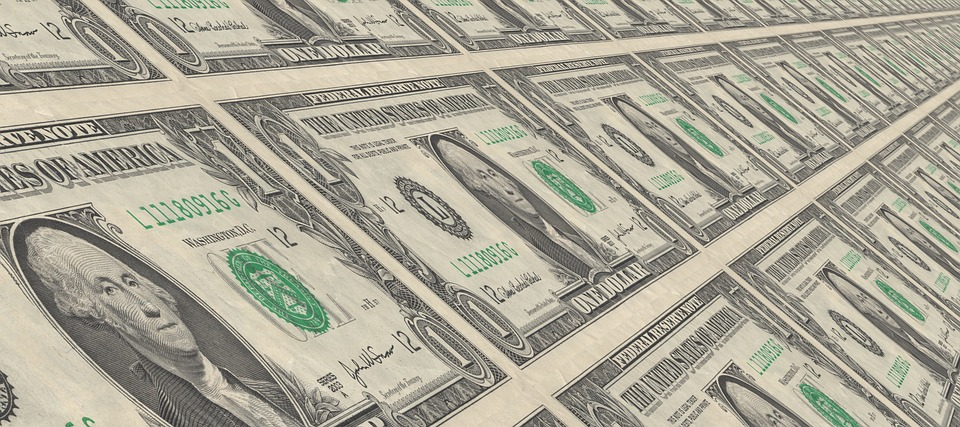Benefits
Have Wage Increases Hit Their Peak?
After handing out hefty salary increases over the past year, companies are now becoming more cautious with their cash over concern further big payouts will eat into profits, according to staffing companies, business owners and recent surveys.
Jun. 21, 2022

U.S. wage growth looks to be peaking, a heartening development for the Federal Reserve if not for American workers.
After handing out hefty salary increases over the past year, companies are now becoming more cautious with their cash over concern further big payouts will eat into profits, according to staffing companies, business owners and recent surveys. Economists are penciling in a moderation in annual earnings growth to 5.2% in May from April’s 5.5% in data out next week. Those figures are among the highest in records dating back to 2007.
Employers have had success passing on higher labor costs to customers so far, but may be reaching a tipping point at which higher price depress demand. That’s exactly what the Fed is hoping for in its all-out mission to tame some of the worst inflation in 40 years.
Chair Jerome Powell has zeroed in on the tight job market as a possible source of the problem, so any cooling in wage growth — and therefore, potentially inflation — would be welcome news for the central bank, as it walks a tightrope to rein in price pressures without sinking the economy.
“We’ve reached a level of wage inflation where employers are going to say, ‘I’ve done as much as I can,’” said Jonas Prising, chief executive officer of ManpowerGroup Inc., the Milwaukee-based staffing company that serves more than 100,000 clients worldwide. “‘My consumers and customers aren’t going to accept me passing these costs on any further, so we need to start to mitigate them.’”
That mindset should encourage Fed policy makers, who are counting on what they see as anchored inflation expectations to keep price pressures in check as they try to soft-land the economy. Their biggest fear is that expectations become unhinged, leading to a 1970s style wage-price spiral in which consumers anticipating higher prices will, in turn, demand higher wages — forcing companies to charge their customers more.
Increased chances of a soft landing would be good news for investors, who’ve seen stocks slide to their lowest levels in more than a year on fears the Fed’s efforts to curb inflation toward its 2% target will result in recession. The central bank’s preferred price gauge, the personal consumption expenditures index, is projected to show a 6.2% climb in April from a year ago when released later Friday.
That’s taking a toll on American workers, who are seeing their wage gains eaten away by higher prices for everything from food and gas to shelter.
Burning Glass Institute Chief Economist Gad Levanon said the U.S. is transitioning from a pandemic-driven job market — where many Americans weren’t actively seeking work due to fears of the virus and related issues — to one that is more traditionally tight because unemployment is low. That might take some of the edge off wage increases, but pay is still likely to grow rapidly, said Levanon, whose institute specializes in labor-market research.
“Every company still needs people but they don’t need hundreds of people,” said Tom Gimbel, chief executive officer of Chicago-based employment agency LaSalle Network. “They’re being choosier about who they’re hiring than they were six months ago.”
Many companies, especially larger ones like Chipotle Mexican Grill Inc. and T.J. Maxx owner TJX Cos., are still successfully passing on higher labor and materials costs to their customers. That’s a trend that most Fed policy makers commented on at their meeting earlier this month, according to minutes of the gathering released on Wednesday.
However, “a few participants added that some of their contacts were starting to report that higher prices were hurting sales,” the central bank said.
That’s especially true among smaller firms, which generally have thinner profit margins, and can only boost pay and benefits so much. They also tend to be concentrated in industries with a larger proportion of low-skilled workers, where wage pressures coming out of the pandemic have been the greatest.
“The competition with larger companies is capping the ability of smaller firms to add to headcount,” said Nela Richardson, chief economist of Automatic Data Processing Inc., which provides payroll management and other services to companies.
Beveridge Well Drilling Inc. is among those feeling the pinch. The Nebraska-based company is offering an hourly wage of $16.50 for manual labor, up from $12 about a year ago. But even with “100%” health care benefits and other generous perks, it can’t fill all the open slots, vice president of construction Brandon Jones said.
And while the firm could bump up its offers to about $18 an hour, that’s “about as high as we feel we can do” against the backdrop of rising fuel and supply costs, Jones said.
Wage growth should slow to 4.5% by year end as temporary factors that have boosted pay, such one-time raises to compensate workers for pandemic hardship, come to an end, according to Goldman Sachs Group Inc. economist Spencer Hill. That will go some way toward the 3.5% to 4% pace he reckons is compatible with the Fed’s 2% inflation target.
“If wage growth comes part of the way down as temporary factors fade, the remaining task for the Fed would be more manageable,” Hill said in a note to clients this week.
___
©2022 Bloomberg L.P. Visit bloomberg.com. Distributed by Tribune Content Agency, LLC.
